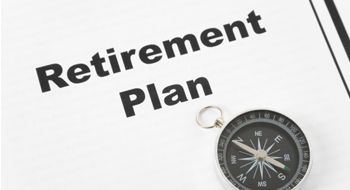
There have been many negative headlines around the world about DB pension plans. Some DB plans are facing severe funding problems and, in some countries, governments have stepped in and “frozen” DB plans to new entrants. Critics say DB plans are too expensive for single employers to operate; others feel public sector employees should get the same type of pension everyone else does.
But those eager to write an obituary for DB seem short on adequate alternatives.
DB can do what other types of retirement savings can’t—provide an adequate pension that’s based on a member’s earnings and service. After 30 years in a typical DB plan, you’ll receive a pension equal to approximately 60% of what you were making before you retired. That objective—replacement income—is lacking in other retirement savings vehicles.
DB can work, and the Healthcare of Ontario Pension Plan (HOOPP), which I have led since 2001, is living proof of that. As of the end of 2010, we are 101% funded—and are one of the few large DB plans in Canada that can make that statement. Our fund returned 13.68% in 2010, one of the strongest rates of return reported. With $35.7 billion in assets, we’re growing, and we’re able to meet the needs of the 250,000 members and pensioners who are depending on us.
So let’s look at the three top concerns about DB: funding, cost and the idea of “parity” in pensions.
Funding
Having a solid funded status on a go-forward basis requires a lot of work and commitment. HOOPP’s approach has been to align the assets we have with the income needs of our membership. That results in a more conservative asset mix. At the end of 2010, 53.3% of our holdings were in fixed income, with a further 1.6% in cash and short-term securities. Equity exposure represented about 28.9% of our assets, with real estate (11%) and private equity (5.2%) rounding out our holdings.
The purpose of a pension plan should be to deliver pension payments, which HOOPP currently does to the tune of $1.2 billion per year. The majority of our holdings, the fixed income and the real estate, deliver steady income. We have just the right amount of growth exposure that we need to meet the needs of our membership. Through liability driven investing, we want the right level of returns at a minimal level of risk. That approach has helped us maintain a strong funded position.
Cost
When people say DB is expensive to operate, they really mean there’s a risk that the plan can be underfunded. That’s especially impactful for single-employer pension plans. With HOOPP, the funding risk is borne on the shoulders of hundreds of employers.
At the operating level, DB is one of the most efficient pension-producing machines you can find. HOOPP harnesses economies of scale to ensure that the vast majority of money goes to pensions. Our operating cost in 2010 worked out to just 26 basis points. Compare that with the 100 to 200 basis points charged by retail mutual funds, and you’ll see that the HOOPP approach means more money is being channelled into the hands of retirees.
Parity
Finally, we often hear people say that public sector employees should get “the same pension that everyone else gets.” According to Statistics Canada figures from 2008, 77% of public sector employees have DB pension plans. A further 5% have a pension plan that is not DB, and 18% have no plan.
In the private sector, 17% have DB, 11% have a non-DB plan, and the vast majority have no plan at all.
Is this what we want? In order to retire with independence and dignity, retirees need 50% to 70% of the income they had while working, depending on which pension expert you listen to. DB can get you there. Other types of plans, particularly voluntary ones, don’t. The average Canadian amasses just $60,000 in his or her RRSP during a life of work. Given that you need $20 of savings for every dollar of income, that’s simply not enough—you would need to save $500,000 to provide yourself with a pension of $25,000 per year.
So I’d say, yes, everyone deserves the same pension: an adequate one. It’s time for pension reform talk to move away from “voluntary” solutions, which, judging from the nearly $600 billion in unused RRSP room in this country, don’t work. The debate needs to focus on adequate pensions. With good governance, a solid investment strategy, the objective of income replacement and a multi-employer model, pension plans can achieve adequacy. If HOOPP can do it, others can, too.
John Crocker is president and CEO of the Healthcare of Ontario Pension Plan.
